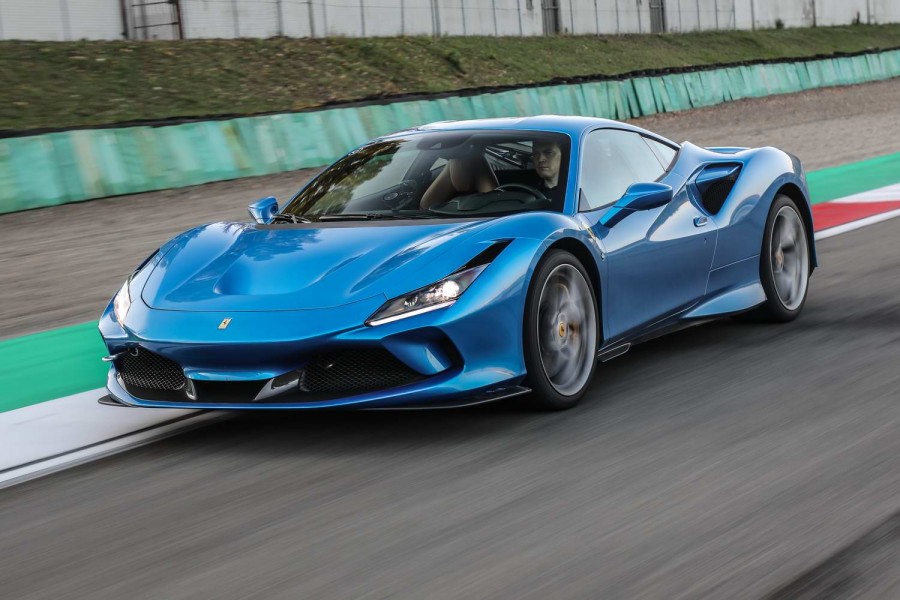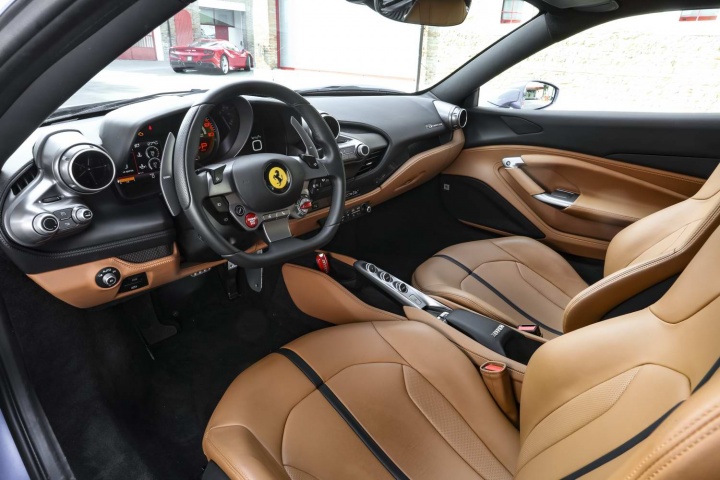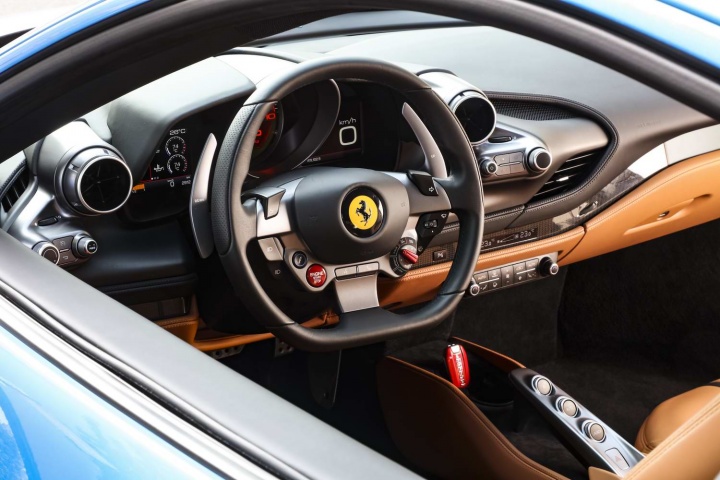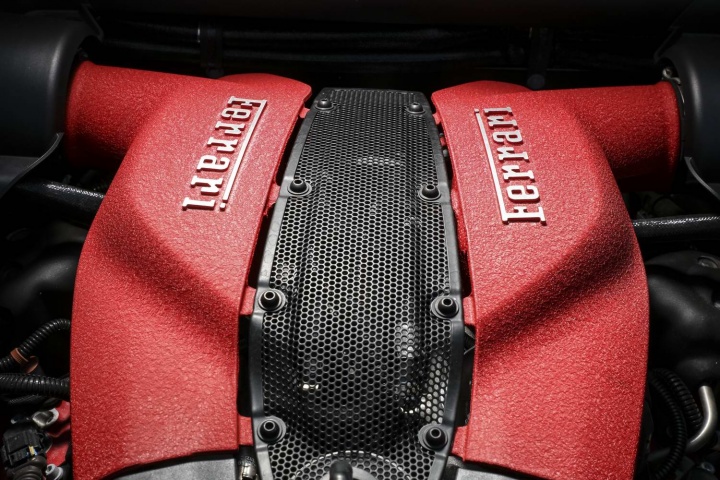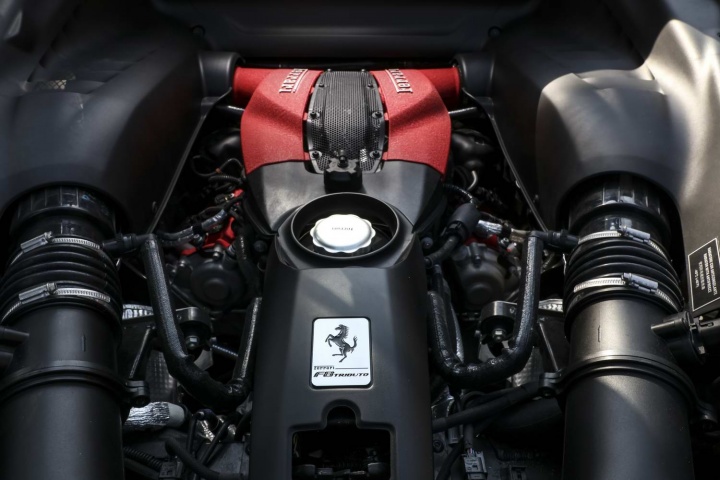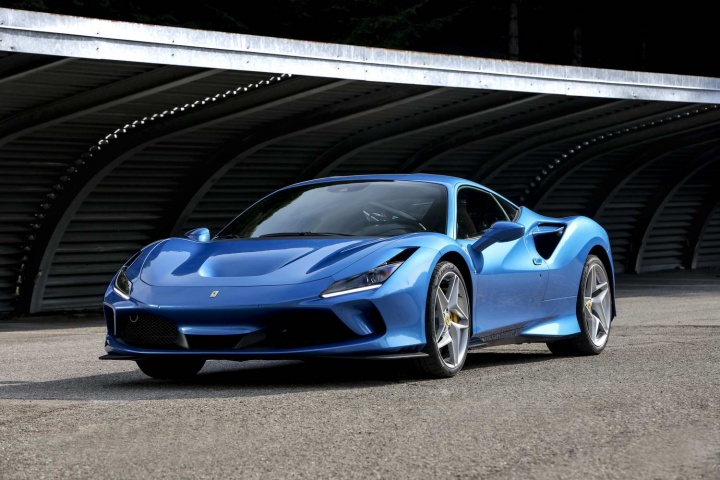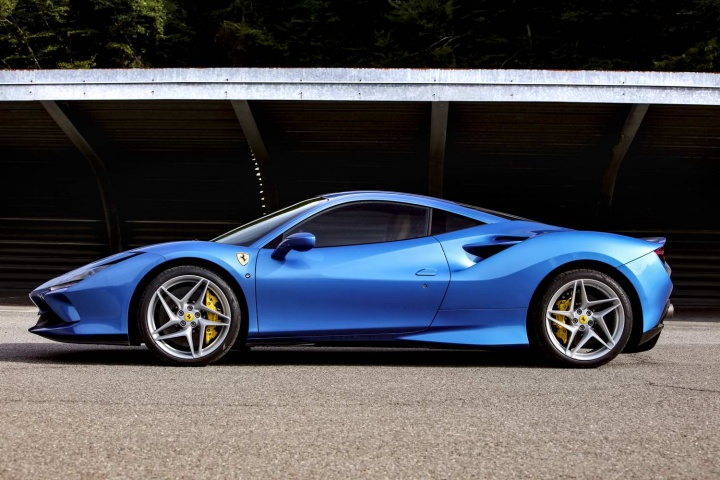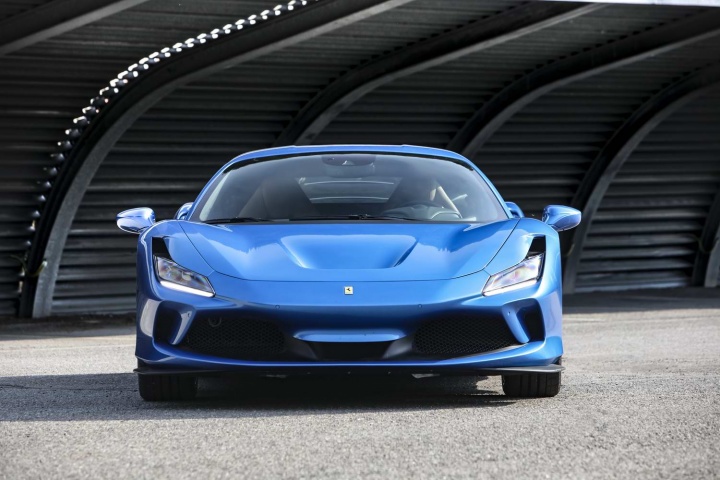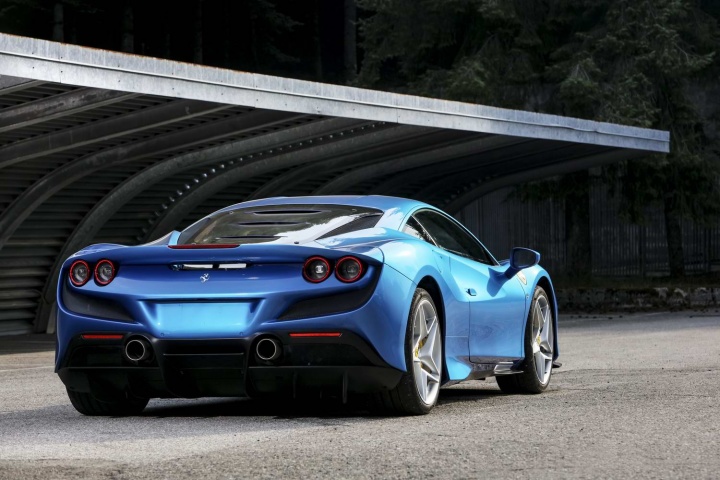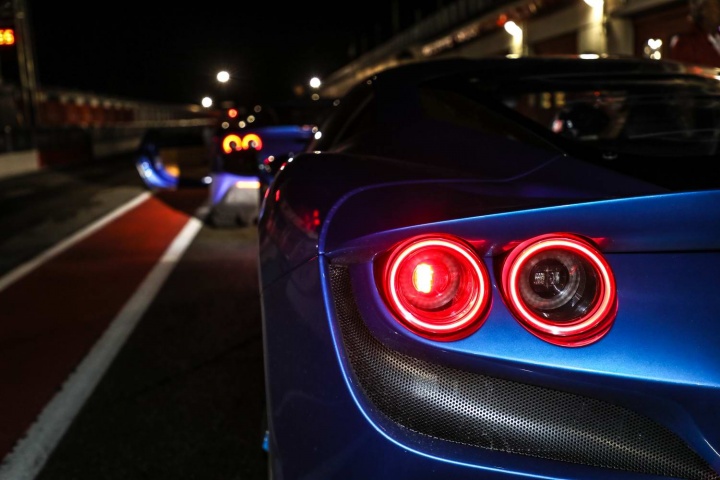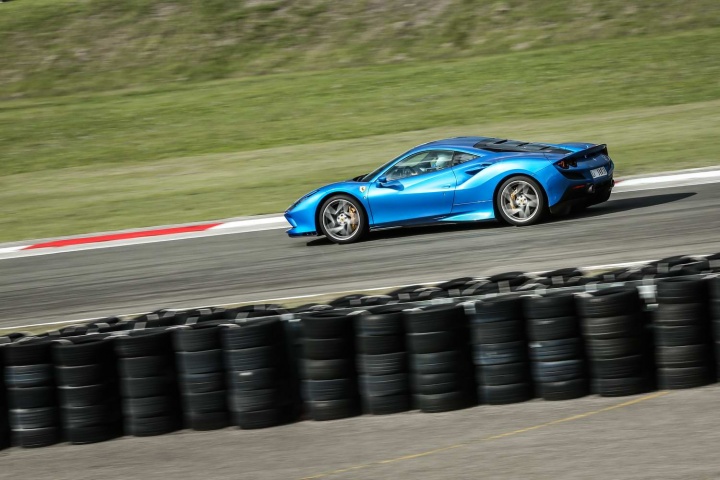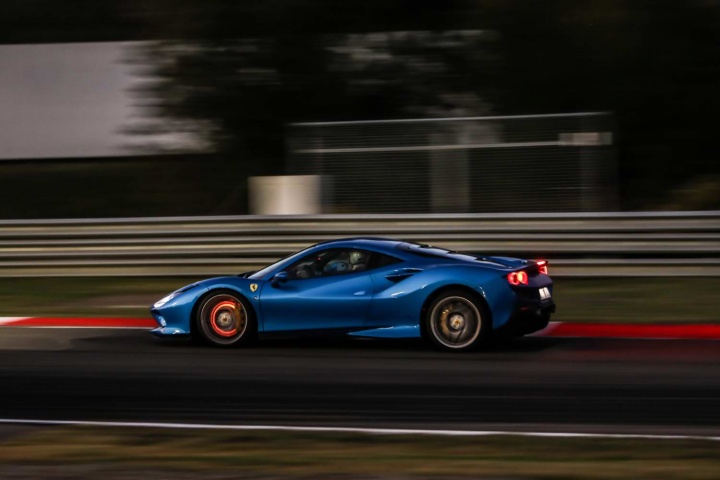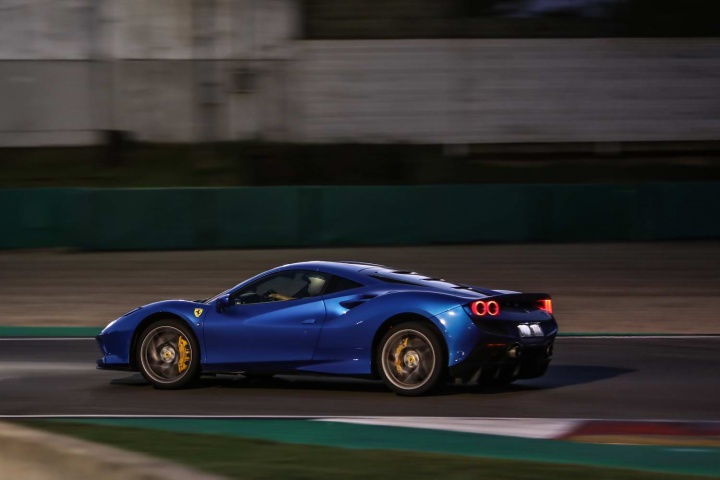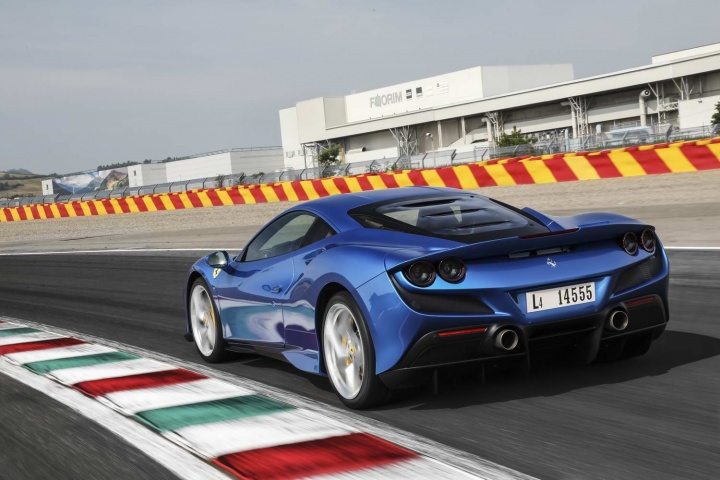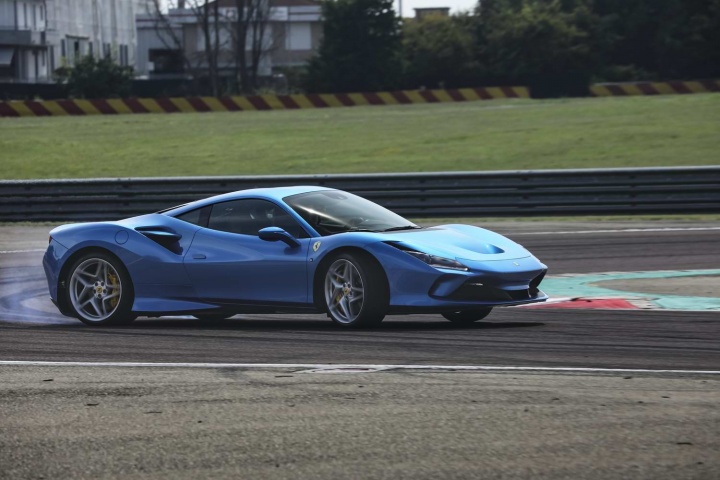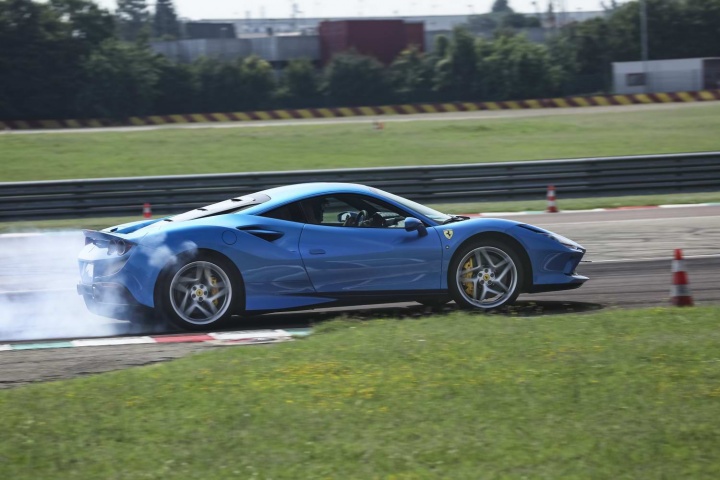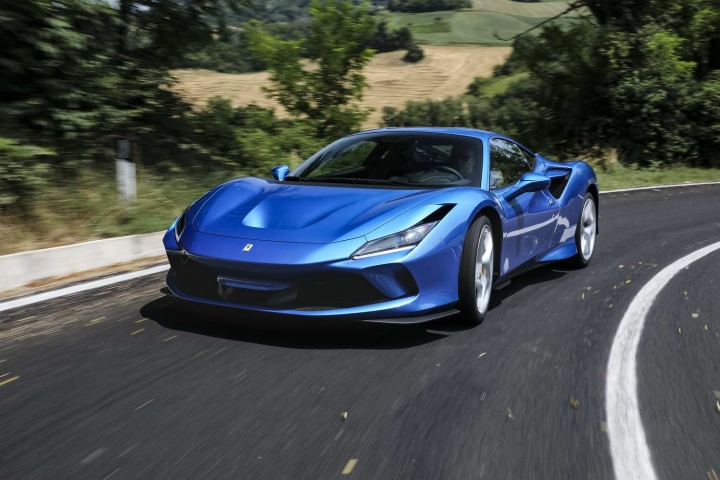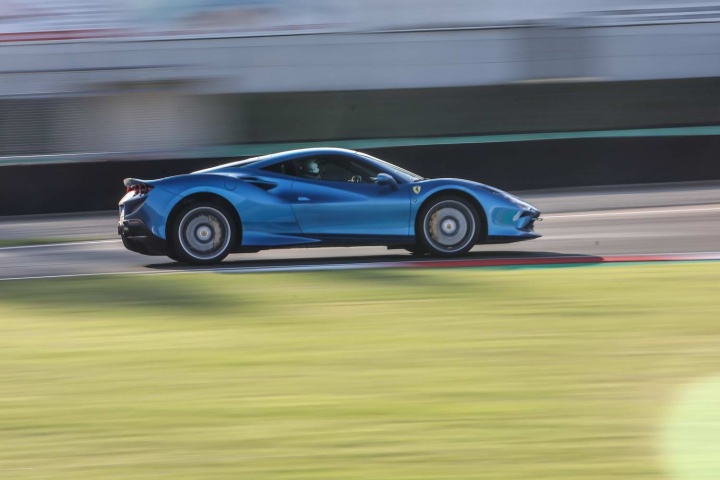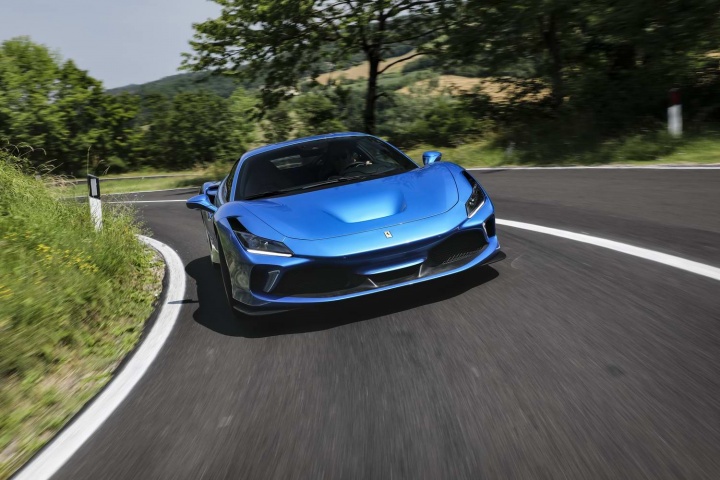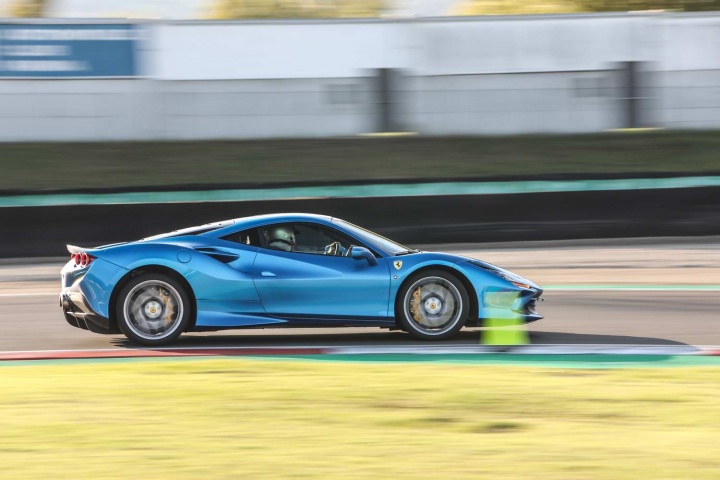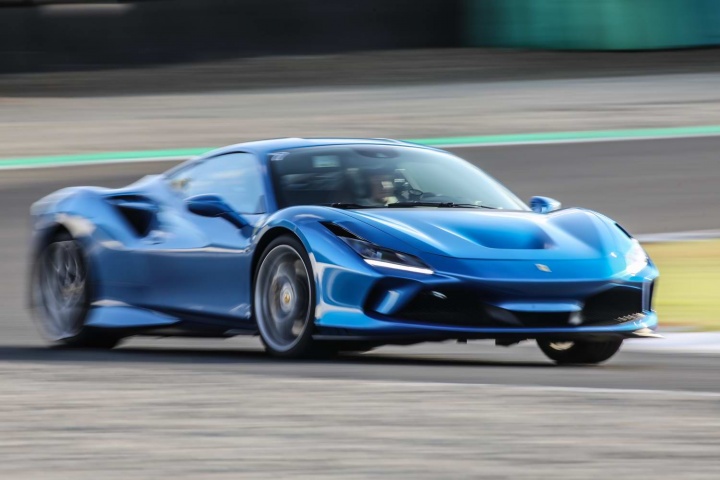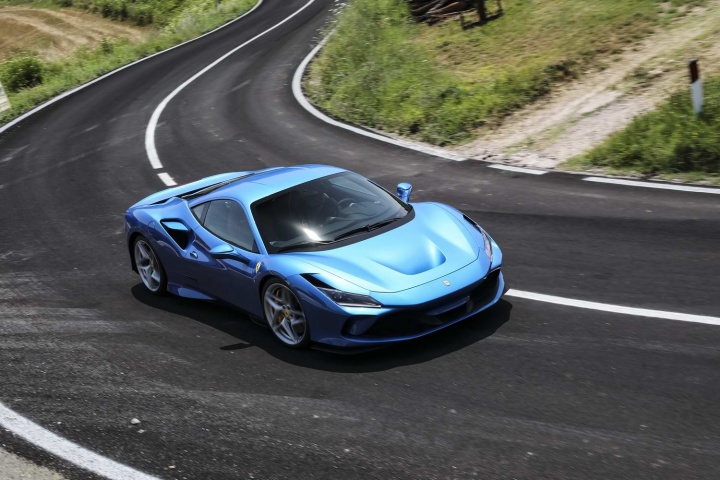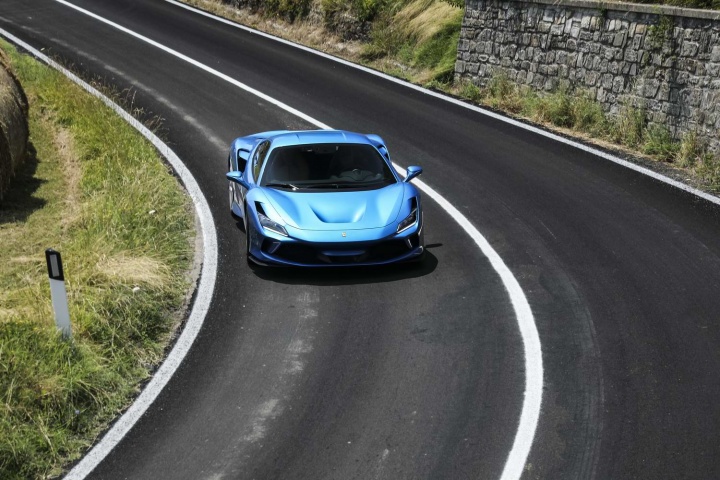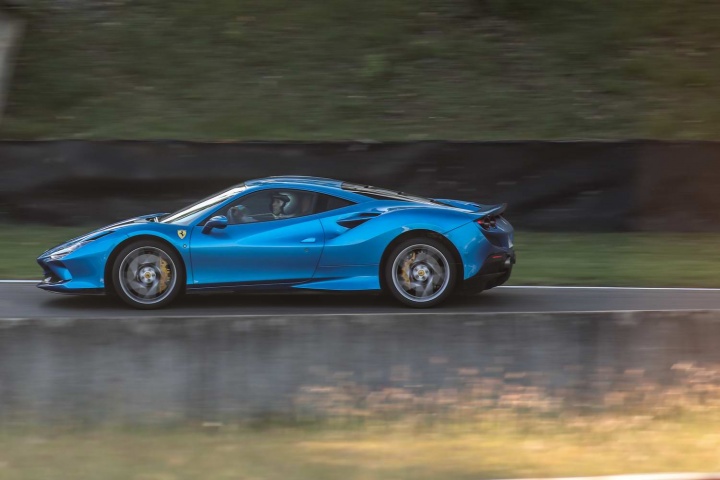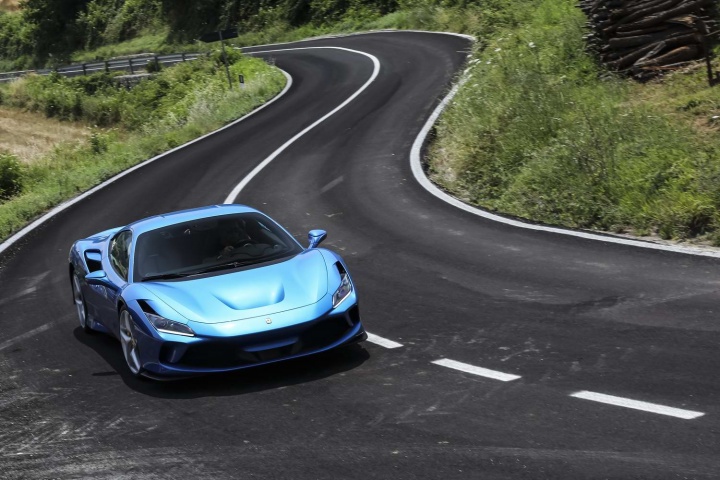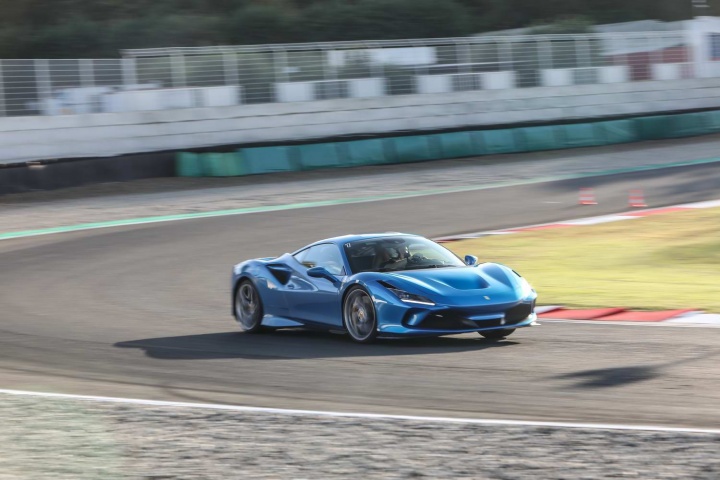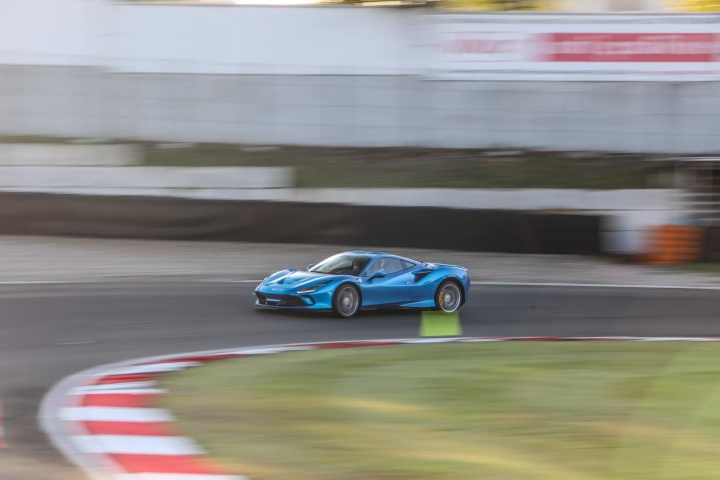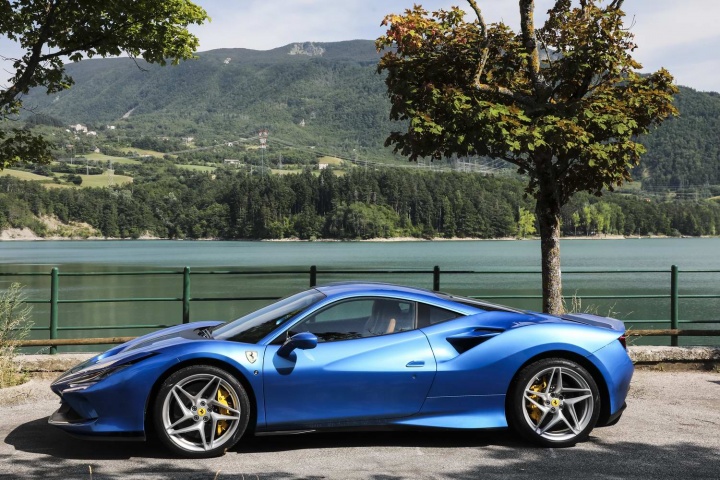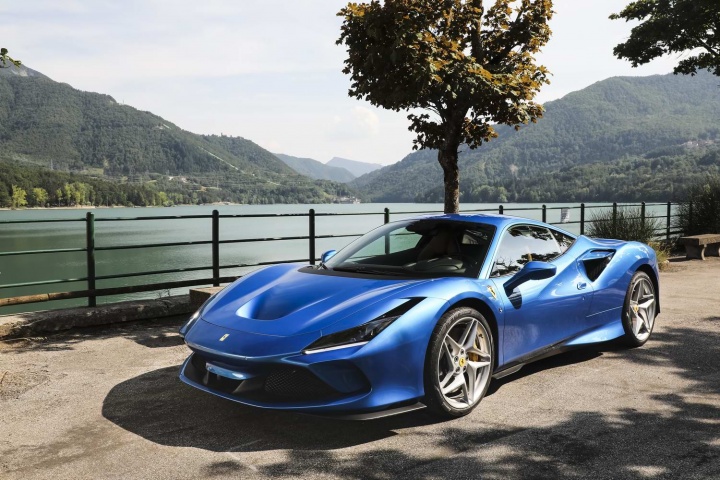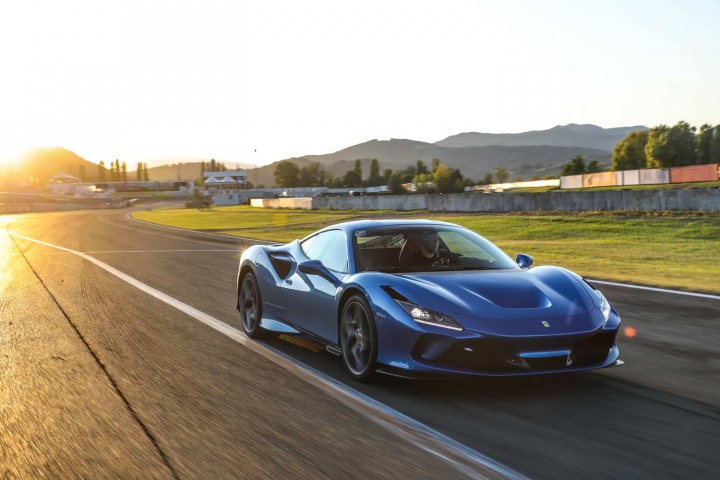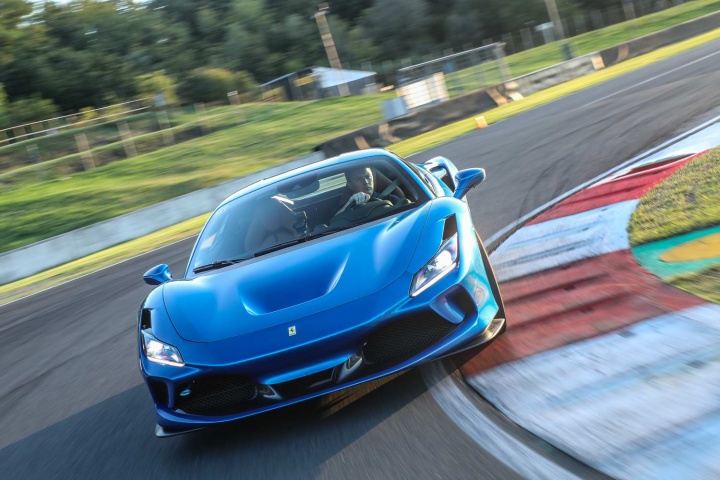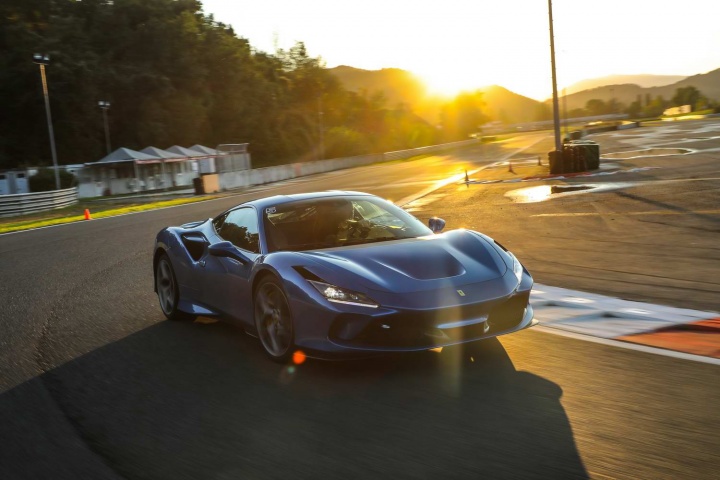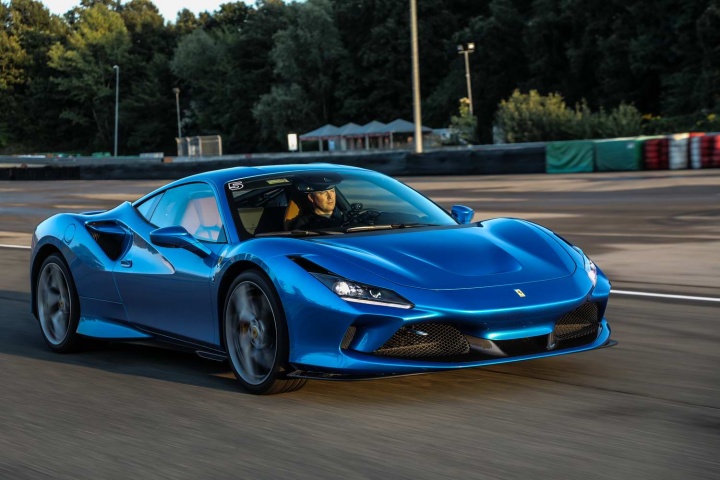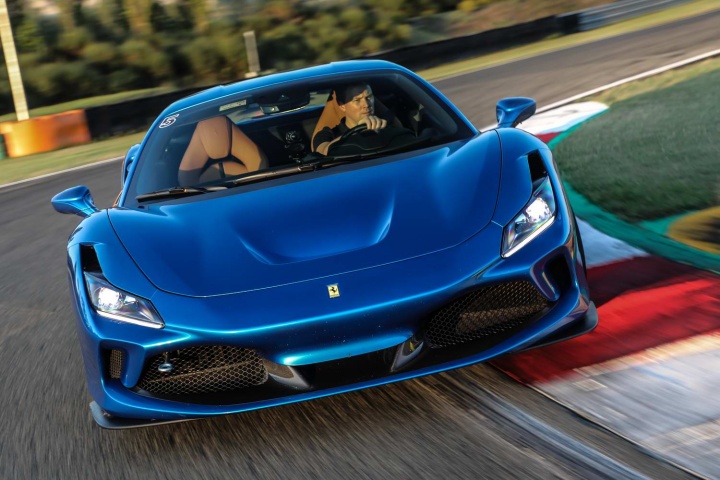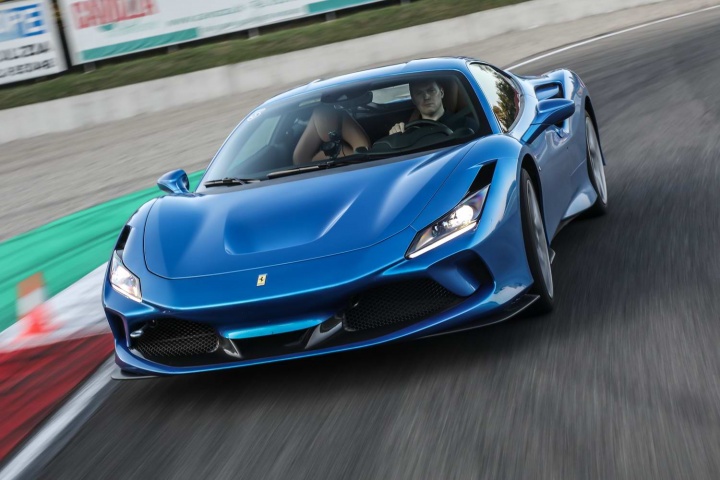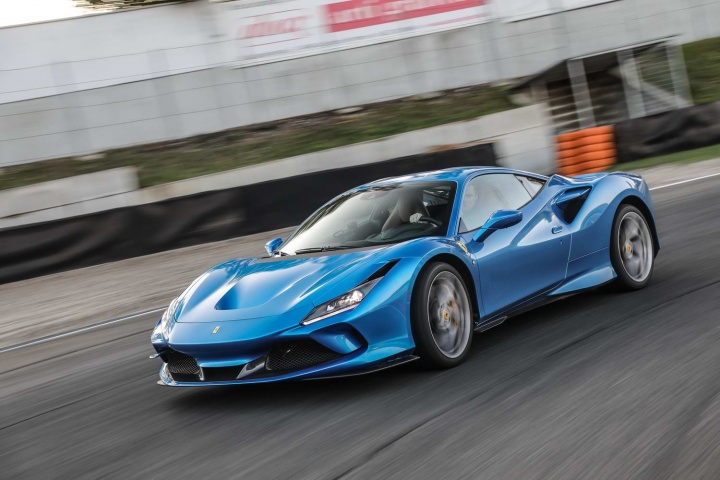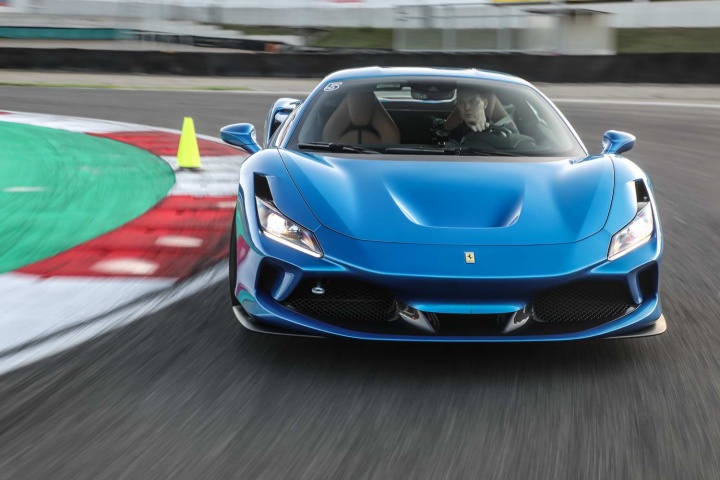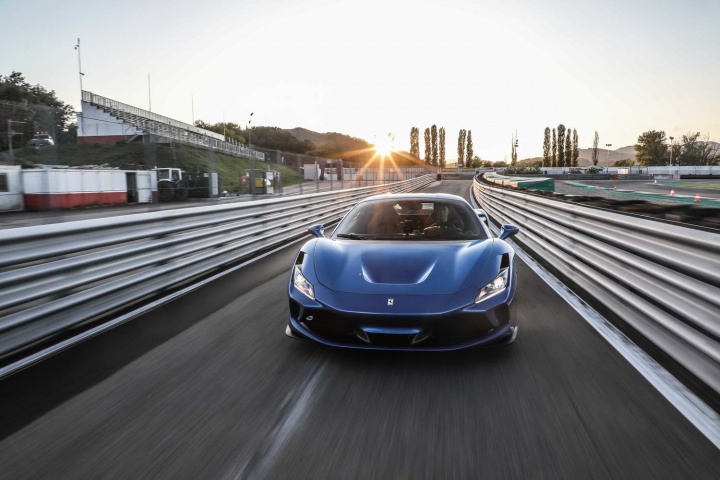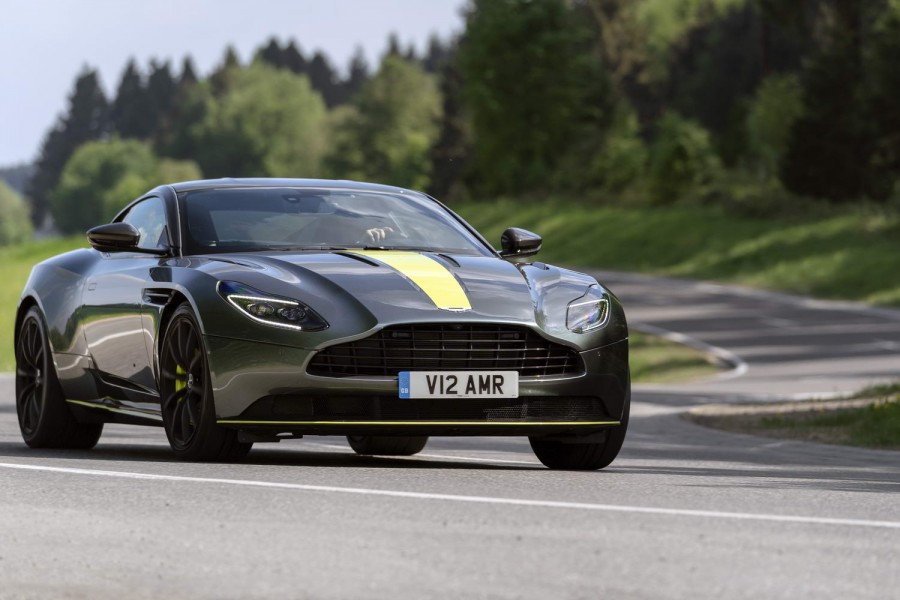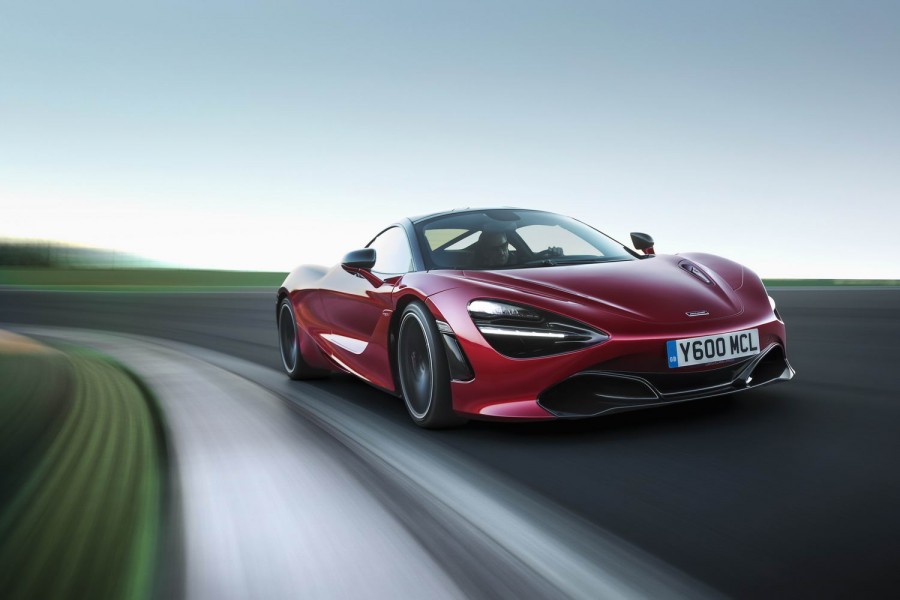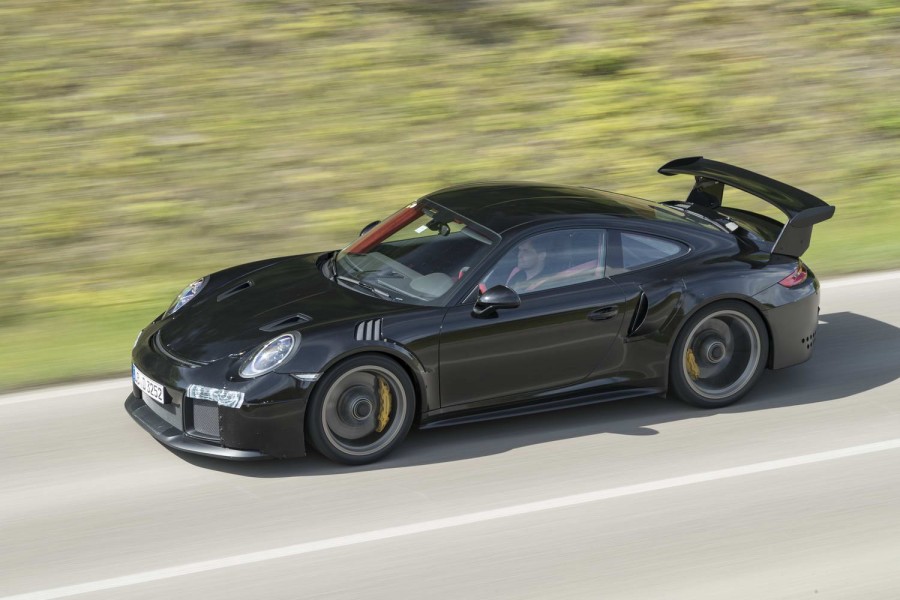The new Ferrari F8 Tributo continues a long line of mid-engined, V8-powered sports coupes from the Italian company. Its name indicates that Ferrari wishes to pay tribute to the sensational V8 engine mounted behind the cabin, but there's so much more to this car than that.
In the metal
Think of the F8 Tributo as an evolution of the Ferrari 488 GTB rather than a ground-up creation. It clearly keeps that car's proportions and stance, while the focus on functionality and aerodynamic efficiency has more in common with the mighty 488 Pista. And it's fair to say that Ferrari took all the lessons learned in the development of the Pista (much if it coming straight from the company's 488 Challenge race car) and applied them to the F8. While there are major differences between the 488 GTB and the F8 underneath the skin, the visible changes include a new 'S-Duct' up front (where the air flows in through the nose of the car and out through a large vent in the bonnet) and what is called a 'blown' spoiler system at the back.
The result of all the aerodynamic work is 10 per cent more downforce, with zero increase in drag. It's worth mentioning that Ferrari also focused on managing the temperature of the air entering the engine (in a bid to enhance performance), meaning a completely new air intake system. It now takes air from near the rear spoiler instead of behind the doors. Those vents remain, however, now feeding the larger intercoolers. There's a lot going on in the detail changes of this car over the 488 GTB, where seemingly every little tweak has been considered in terms of engine performance as much as it has for the aerodynamics.
There are new lights front and rear, using LED technology of course, and a lightweight rear screen made from Lexan. The front lights are smaller than before, allowing the inclusion of new brake-cooling air intakes, which apparently meant Ferrari didn't require larger brakes to cope with the elevated performance of the car. This really is a dizzying level of interaction between all the various sub-systems.
That continues underneath, which has been completely redesigned and uses active elements to reduce drag or increase downforce as conditions demand. Some 60 per cent of the overall increase in downforce comes from the underfloor design, which is fiendishly complicated and pays more than just lip service to Ferrari's motorsport experience.
The interior might appear minimal, but there's a lot going on there. While Ferrari is sticking with its philosophy of putting as many controls on the steering wheel as possible, it has also reduced the diameter of the wheel and, something we hugely approve of, it has reduced the thickness of the rim itself. Behind is the evocative centrally mounted rev counter, flanked by two customisable screens. It takes time to get completely au fait with the operation of all this (not to mention the indicator buttons on the steering wheel), but the quality seems high.
Elsewhere, there are flashes of carbon fibre (and the option to add plenty more), a fabulous set of leather-covered sports seats with electric adjustment and the new option to fit a small touchscreen on the passenger side of the cabin to allow them to see things like all the performance data.
In terms of practicality, it's spacious for two (though tall drivers may find headroom at a premium if they're wearing a helmet on track) and there's a small amount of storage behind the seats. In total, Ferrari quotes a figure of 200 litres for luggage space, which is a little down on the 488 GTB's figure.
Driving it
Power comes from the same twin-turbocharged 3.9-litre V8 petrol engine as was developed for the Ferrari 488 Pista. It's significantly different to that of the 488 GTB in a bid for even more performance and responsiveness, with weight reduction (especially of moving parts) also a major consideration. And it's nothing short of a masterpiece. Its peak figures of 720hp and 770Nm of torque, while pleasing in their own right, don't begin to describe how special this unit is.
And yet, despite Ferrari's relentless obsession with getting more and more from the engine, it's remarkably docile at low speeds, quite content to amble about when needs be. The seven-speed dual-clutch gearbox is also very well-judged. Again, at low speeds, it's smooth and easy to modulate, making even stop-start traffic a cinch. You can leave it in fully automatic mode if you wish, choosing when to override the system by tugging on the delicate, but wonderfully long gearchange paddles, or press the big round AUTO button in the centre console to switch into fully manual operation.
Which we did for nearly all of our time behind the wheel. It takes a few bursts up through the gears for you to tune into when you should change up, as the engine is ferocious and feels like it could keep revving and revving. The rev limiter is abrupt, too, in what Ferrari calls its 'Wall Effect' strategy, which means the limiter doesn't gradually stop play, but instead immediately cuts in at 8,000rpm. Apparently that actually helps with lap times. The sound this engine makes changes from a purposeful rumble at idle to a more melodic tune in the midrange before the V8 really gets into its stride and manically screams for the redline. Sure, there's plenty of torque low down the rev range for everyday driving (and nothing that could be called turbo lag) and decent progress, but there's nothing quite so exciting as stringing an engine like this out to its limits, gear after gear.
How does gears are swapped depends, like other sub-systems of the car, on which driving mode is selected. Our first stint in the F8 was on a drying track following a heavy rain shower, so the Wet mode was chosen. This softens out the throttle sensitivity and smoothens the gearchanges in a bid to aid traction and stability. Even so, it was clear that the wet track wasn't causing the F8 Tributo too much difficulty and, with a dry line appearing, it was time to use the wonderfully tactile 'Manettino' on the steering wheel to switch into the Sport setting.
The changes are immediate and tangible, with more throttle response and sharper gearchanges, as well as a little more leeway with traction on the exit of tighter corners, giving the driver a bit more control. In this mode, the F8 Tributo is ridiculously fast around a track and easy to drive quickly. It flatters the driver with huge traction and composure, even if the cornering lines or braking points aren't quite right. The carbon brakes are simply mighty, too, hauling the car down from high speed time and again, lap after lap. Our test cars were going all day with few chances to cool down, yet the fabulous brake pedal feel and stopping power didn't wilt.
And if that was the end of the F8 Tributo's talents, we'd have come away mightily impressed. But then it was time to try the Race setting. Holy moly. This unlocks the Tributo's full talents to those that are willing or able to lift their own ability. Everything happens quicker. Throttle response, previously considered to be very fast, sharpens up further. The gears slot home with more conviction and speed, too, but it's the electronically controlled differential and myriad stability systems that really help the F8 come alive. On corner exits where we could feel the electronics gently modulating the power and brakes in Sport mode, it's suddenly possible to carry far more speed and, well, freedom, leading to an incredibly satisfying rear-lead stance, even through fast corners.
Somehow, even though the F8 is letting you be responsible for more, it doesn't turn into a nervous, twitchy and challenging car to drive; it becomes an even more engaging and alluring one. In this guise we discovered how well the chassis reacts to judicious use of trail-braking to get the nose pointed into the apex while the rear of the car gently pivots around to help carry huge speed through the middle of a corner, blasting out onto the straights and firing up through the gears again.
It's a breath-taking experience to discover the layers of ability in a serious sports car such as the F8 Tributo, one that makes you want to improve your own driving to better exploit it. And yes, that screaming V8 engine is at the heart of the experience, but the rest of the vehicle it's attached to is just as important, and just as phenomenal.
What you get for your money
You can't judge a car at this price level by normal standards. When you see the engineering that has gone into this car, never mind its abilities, you begin to appreciate why it costs so much. It's funny to think that Ferrari doesn't class it as a supercar when its level of performance is certainly up there. I'm certain that its buyers will be very satisfied with their purchase - and most of them will spend a good deal more on customising the F8 Tributo to their liking.
Summary
When we drove the Ferrari 488 Pista, we were blown away by its engineering and on-track abilities. The F8 Tributo adds to all of that by building back in a little more everyday usability, seemingly without sacrificing any part of its dynamic repertoire. Perhaps more stunning of all is that the seriously high performance created by the mighty V8 engine is accessible to all drivers. A fitting tribute indeed.

